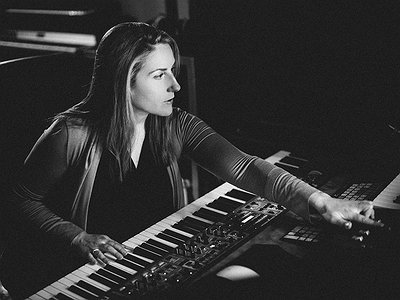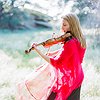Part 3
There are many descriptions of the ideal state of mind for being creative. What is it like for you? What supports this ideal state of mind and what are distractions? Are there strategies to enter into this state more easily?
I would definitely speak of “conducive states” or “inviting states” in the plural rather than “ideal state” in the singular. I think it is counterproductive to yearn for some sort of perfect place for art to come through. It just has to come through and there’s no perfect; there is just listening and making room for it, and always staying interested in how one can improve the pathways and methods. There are many studies that have been done on creativity and brain activity, but I think we are still at the beginning of that journey of understanding, and I believe some element of it will always remain a mystery. Just when you think you’ve pinned it down, it’s somewhere else.
There is definitely an important component in liminal or dreamlike states, somewhere on the border of consciousness, where we become more aware of subconscious material and intuitive connections. But there are so many different kinds of creativity that come into play during the process. As a musician, and member of a professional team, you have to have your wits about you; you have to be fully embodied. You’re using all your faculties to implement the ideas. In addition to your intuitive insights and ability to generate musical ideas, your analytical, technical, managerial, interpersonal inventiveness and skills are all needed. It’s a dynamic network that adjusts to whatever tasks are on the table at that moment. You have to be fluid and present.
I think an important guiding principle is “Know thyself”. I’ve delved into various modalities of embodied mind, including yoga, meditation, creative dreamwork, Feldenkrais, authentic movement. But I have to let things cross-pollinate in an natural way. I prefer not to formalize things too much in terms of preparation or ritual for creative work, because it can become its own kind of obstacle. I think I’ve gotten to a certain point where I know I am an artist, and when it’s time to go deep and find the material, I have to trust myself and take that deep breath and dive in and go. Everything I do and learn becomes relevant and available as needed. It’s like there is a yantra of the particular work you are doing. That doesn’t necessarily have to be a heavy thing– it can be fun. There are so many things that can pull you away from what matters, but when I really commit to a particular focus, the distractions eventually melt away. It’s an interesting blend of serious commitment with playfulness and joy.
How do you see the relationship between the 'sound' aspects of film music and the 'composition' aspects? How do you work with sound and timbre to meet certain production ideas and in which way can certain sounds already take on compositional qualities?
I experience orchestration, arrangement, sound design, and mix on a continuum. They all contribute to the perceived tone and color of the music. When I work with each element, I’m going for a total sound picture in my head. I create sounds from scratch by programming synthesizers, I record instruments live, I create custom samples and process audio with effects.
Rhythm, pitch, and timbre are all related elements of vibration, and this manifests in a very literal way when you are working electronically with oscillators and modulation sources. A pulse can blend into a continuous long note, for example. So there isn’t a strict separation between “composition” and “sound”, or sequential and timbral organization.
On a film or tv project, I also make an effort to have communication lines open with the sound team, so that the music and sound elements can work together well. Elements that come from the sound team can often have a pitch and a musical shape. In a sci-fi story, there can be very intricate and original sounds that I want to know about as well as contribute to. Depending on the context and genre, it might be important to integrate a particular sound into the musical design, or discuss different options. A certain tempo or note choice may even work better with regard to the timing of a door slam, for example. I’m definitely always considering the sound elements as part of the landscape I am working in, to whatever degree they’ve been delivered to me.
Our sense of hearing shares intriguing connections to other senses. From your experience, what are some of the most inspiring overlaps between different senses - and what do they tell us about the way our senses work? What happens to sound at its outermost borders?
It’s fascinating how our different senses intermingle and overlap to create connections, physical and psychological understanding, and even a fully realized story environment in our brain. I think that’s why art forms that actively play with multiple senses are so engaging. For me, the process of imagination is very synesthetic. When I imagine sounds, instrumentation, and timbre, I feel resonances, and I also visualize colors and levels of transparency and weight, and think in terms of textures. So the compositional process feels very immersive and multi-dimensional to me. When I bring this to a scoring environment, it’s interesting because I’m taking in a lot of visual, kinesthetic, and narrative information from the picture, which interacts with my inner creative sensory system.
Art can be a purpose in its own right, but it can also directly feed back into everyday life, take on a social and political role and lead to more engagement. Can you describe your approach to art and being an artist?
Looking at human history, the impulse to make art goes way back, and it often connects to rituals, spirituality, and everyday life. It binds these elements together. This applies to sculpture, painting, music, theater– you name it. I think even in the most challenging political climates, the impulse to create art is strong, and it’s integrated into the fabric of who we are. It’s very close to life itself. It can’t totally be controlled, and it always finds a way. That’s why the relationship of art to society is complex. On the one hand, it is unifying, it is fundamental; and on the other hand, it can be destabilizing. Again, like life, art creates new connections and as it grows it will either fortify or destroy some of the older ways of being and thinking. It also serves to make us aware of our consciousness and our choices. At a certain point of awareness, it becomes a choice to connect the creative impulse to life itself again and again. That’s something the artist must do.
So I see being an artist as a great privilege. I resonate with the idea that there can be a shamanic component to the work, and I resonate with the idea of the griot having a special place in the community. You are working in a space where possibly the impact can be great, but also maybe not, and in any case, it is a space where there is still fluidity and joy. Being an artist means that the way you communicate matters. The art of composing and expressing your thoughts and your being, in connection with others, is part of what you have to offer to the world.
There is room for all sorts of artistic approaches, but I don’t think you need to be an obvious “message artist” to be engaged. There are messages delivered in the way that an artist approaches cognitive and formal concerns. The biggest gift that an artist gets to offer is a practice of connected creative consciousness, supported by all the senses. I seek through my art to invite the audience to listen more closely, to be willing to feel a wide range of emotions, to consider different perspectives, to go into depth with curiosity, and also, I hope, to enjoy this journey of consciousness to the fullest. I think if people are listening, empathizing, and living with joy, self-respect, and curiosity, we are going to end up with a better world.
It is remarkable, in a way, that we have arrived in the 21st century with the basic concept of soundtracks still intact. Do you have a vision of music, an idea of what film music could be beyond its current form?
I’m curious to see how VR and immersive storytelling develops. I think these contexts are where the art form of film music is most likely to change. It puts film scoring right at the edge of theater, which I find fascinating. The issues of spatialization and constructed reality become very different when the viewer interacts with the space and can move around. It’s a huge area for development, and I hope I’ll get a chance to explore it.
As for music itself, there are so many possibilities. To me, music is the felt flow of information, with sound and vibration as a primary medium. That’s a huge expanse, including so many dynamic potentials for structure and understanding on every scale. The field of music includes some very well-developed areas – musical systems and styles from every place on earth – which will continue to grow and evolve. I hope that as we move forward, we will continue to acknowledge and make contact with the vast universe of yet-unexplored potentials. I think our dearest traditions will blossom further if we keep our minds open to all that is possible.
Please recommend two pieces of art (book, painting, piece of music) to our readers that they should know about.
Your readers may know about these already, but if so, maybe I can inspire a renewed look and listen. These pieces have all resonated with me at formative times in my artistic development. (Sorry, it was too hard to choose only two!)
John Cage, Silence.
This book of poetry and essays asks formal and philosophical questions, and opens aesthetic horizons from a musical perspective. It bridges the languages of visual design, musical notation, and versification, and opens the playing field for music in an unprecedented way. But since John Cage said that he had little need for jazz, and that “Beethoven was wrong”– both statements which make me cringe– we have to balance that out with some jazz and Beethoven.
Charles Mingus: Let My Children Hear Music.
This is a dazzling musical journey of an album, taking us through so many deeply felt and original shifts of mood, melody, style, and rhythm. It’s epic and totally unique. When Adagio Ma Non Troppo shifts gears with a saxophone’s brilliant ascent, it’s like the sky opens. I admire how the large ensemble breathes and breaks apart and comes back together in so many creative combinations. No visuals needed to tell this story. I also love the title, and the use of spoken text and recorded material.
Beethoven: The late string quartets. There are so many great recordings of these quartets, but for the op. 132 3rd movement, I have personally imprinted with the Quartetto Italiano’s version. That movement has an extraordinary, inexorable build, and when it finally reaches its peak, you get a sensation more like a great opening than a fixed point. Before you realize it, the unwinding has already begun, and that unwinding is just as engaging as the build.
And ... anything by Pina Bausch. She had such a masterful ability to work with collective movement and human gestures to express authentic emotion. I’m also inspired by the way she maintained the integrity of her company and her work. Catch a performance by Tanztheater Wuppertal Pina Bausch. The movie Pina, directed by Wim Wenders, is a nice place to start too. I enjoyed reading about her life and work in the book Pina Bausch by Royd Climenhaga.







